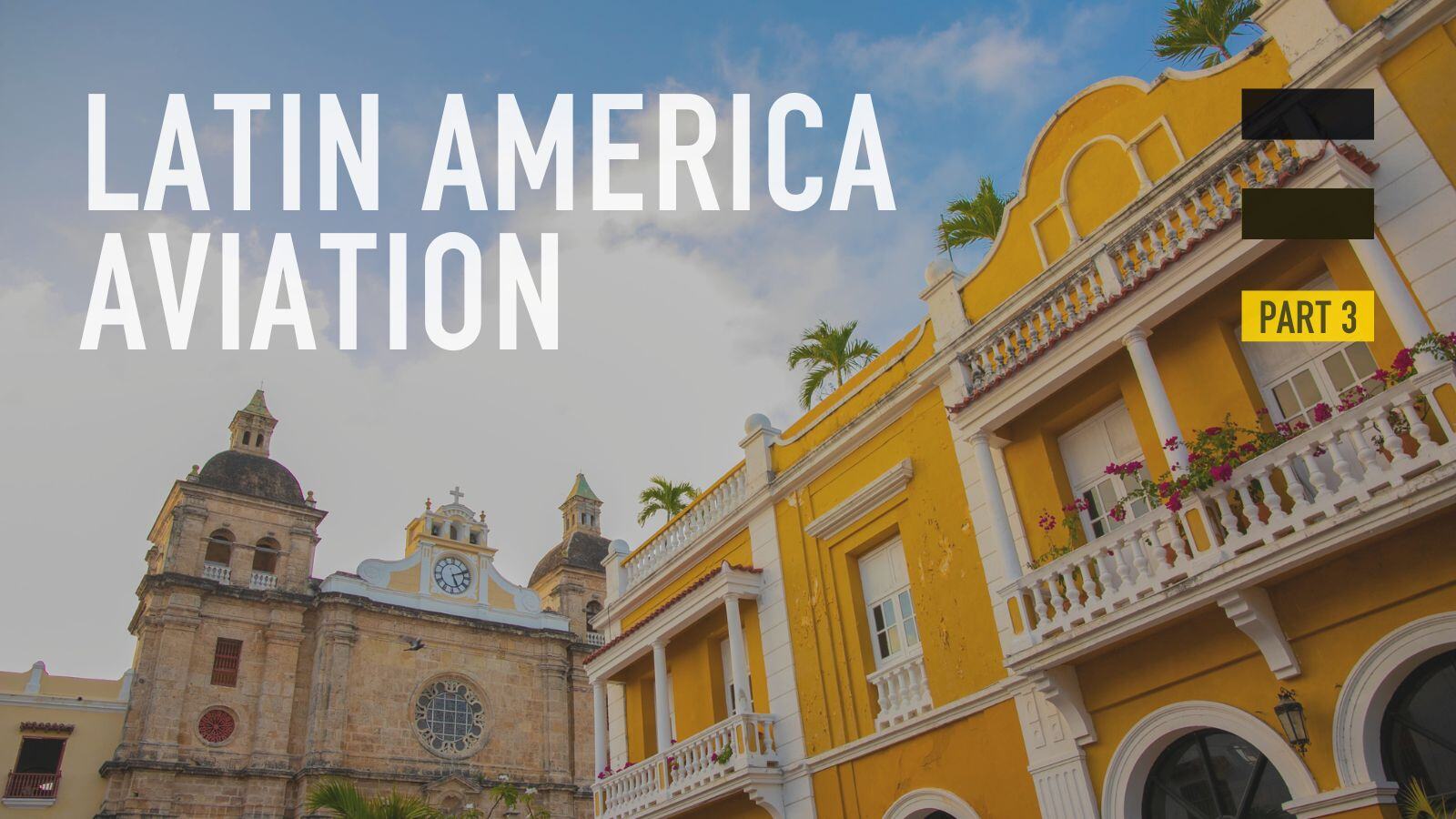Following part one and two of our series on Latin America where we explored connectivity across the continent and beyond, we now turn our attention to the airlines operating across this vast landscape.
Latin America's key airlines
We begin by examining the largest airlines in Latin America, focusing on how their capacity has evolved over a ten-year period.
The LATAM Airline Group is the dominant carrier in the continent and has recovered well from the impact of the pandemic; capacity in October 2024 is 14% ahead of 2019 levels. LATAM operates 21% of all capacity across Latin America and is more than twice as big as the next largest carrier, Avianca. Collectively the ten largest carriers in Latin America account for 74% of all airline capacity.
While Avianca holds the second highest position, it has grown much faster than its larger competitor, increasing capacity by 29% over the same five-year period. This growth follows a relatively stagnant period between 2014 to 2019, during which time Avianca saw a mere 1.1% increase in capacity.
In terms of scale, the next two largest airlines are low-cost carriers (LCC) Azul Airlines and Gol Linhas Aéreas, both operating in Latin America’s largest market, Brazil. Over the decade from 2014 to 2024, despite the pandemic, Azul Airlines grew by 44% overall. However, Gol has experienced the reverse, contracting from a much larger position in 2014 when the carrier is now almost one third smaller than a decade ago.
Testament to the size of the market, three of the Top 10 largest airlines in Latin America are from Mexico. Notably, LCCs Vivaaerobus and Volaris have both experienced rapid growth over the past five years, with increases of 51% and 18% respectively. This surge of LCC growth has injected fresh energy into the Latin America aviation market, driving competition and pushing for greater liberalization.
In the last decade, the share of capacity across the continent operated by mainline carriers has reduced, as LCC capacity has grown faster. By October 2024, LCCs in Latin America had increased their share of the market from 32% to 38%.
THE STRENGTH OF LATAM AIRLINES
As the continent’s largest carrier, LATAM Airlines has affiliates operating in five domestic markets: Chile, Brazil, Colombia, Ecuador, and Peru, as well as international operations within Latin America and to Europe, the United States, the Caribbean, Oceania, and Africa.
Its affiliates have gained significant market shares in the domestic markets of Chile and Peru, holding well over half the share in each. They also hold a little over a third of the Brazilian and Ecuadorian domestic markets and 29% in Colombia according to OAG ‘s latest data.
Looking across the Top 10 Airports in LATAM’s network shows that they have a dominant share of capacity at seven of the ten largest Latin American airports they operate from.
WIDE RANGING NETWORKS – HOW DO THEY COMPARE?
Looking across the Top 10 carriers from a route perspective highlights that the LATAM Airline Group is also largest in terms of the number of routes operated, but only just – they operated 573 routes across their network in October 2024, while Azul Airlines was very close behind, with 571 routes. Almost three quarters of LATAM’s network is domestic, with just 26% of routes operating internationally.
For Azul, their network is largely domestic, with 97% of their routes serving Brazil’s large population at home. The most international of the Top 10 is Copa Airlines who operate almost entirely international routes from their home hub in Panama, serving travellers crossing the continent and beyond. Avianca also has a high share of international routes in their network, with 61% of their routes operating outside the country they originated in.
On that basis Avianca is most comparable with LATAM Airlines. Looking at both carriers’ networks for October 2024 shows that they serve mostly distinct geographic markets, with LATAM routes concentrated around their main basis in Brazil, Peru and Chile. Avianca’s main base is at Bogota in Colombia, where it has strategically expanded in the Colombian domestic market following the exit of low-cost carriers Viva Colombia and Ultra Air in 2023.

October 2024
The Colombian domestic market is very competitive however and has experienced sharp growth since 2019, expanding by 39% from 3 million seats to 4.3 million in October 2024. Despite experiencing a significant increase in capacity over that time period themselves, adding 35% more seats into the market, Avianca’s share of the domestic market has fallen slightly from 53% to 52%.
LATAM Airlines Colombia has also added capacity into Colombia, increasing their share of capacity from 22% to 24%, and there is a new entrant in the form of a new LCC, JetSMART Colombia, backed by experienced investors, Indigo Partners, who have emerged and are rapidly gaining market share. This ultra-low-cost carrier initially deployed Airbus A320neo aircraft on its Colombian network, launching operations on eight key routes, aiming to fill the void left by Viva Colombia and Ultra Air. JetSMART Colombia had secured 8% of the Colombian domestic market in October 2024 and, according to their press releases, has ambitious growth plans for the future.
Colombia's large area, divided by the Andes Mountains, makes air travel a competitive and appealing option for travelers, fostering a strong propensity for air travel. For this reason, four Colombian domestic routes rank amongst some of the busiest domestic routes in the continent.
Avianca has the dominant share on all four routes, operating very high frequencies. Between Bogota and Medellin alone there are almost 100 flights per day, of which Avianca operate over half, meaning customers have plenty of choice about when to travel and who with. On the Bogota – CLO route, there are almost 80 daily services, with Avianca operating 45.
LATIN AMERICA - THE A321-XLR ERA
Whilst the biggest domestic routes have no problem filling aircraft, the arrival of the Airbus A321XLR, a fuel-efficient, long-range aircraft, offers significant potential for those international routes in Latin America where there may not yet be quite enough demand to fill a widebody aircraft. The arrival of the narrowbody A321-XLRs in the region marks a significant moment for airlines seeking to expand their networks efficiently. These long-range aircraft open new connectivity options in terms of range and exciting possibilities for both domestic and international growth across the continent.
LATAM Airlines has announced plans to lease five of these aircraft from Air Lease Corporation, with deliveries scheduled to begin in late 2025. Chile's JetSMART and Sky Airline have also embraced the A321XLR, placing orders for 14 and 10 units, respectively according to their official press releases.
Airlines will be empowered to launch new routes, connecting previously underserved markets that we identified as white spaces earlier in this blog series. This development promises to revitalize and expand the air travel landscape in Latin America, benefiting both airlines and passengers alike.
Catch-up with the Latin America Aviation series:
- Part 1: Connectivity Across the Continent: A Deeper Look At Latin America
- Part 2: Looking Outwards: How Connected Is Latin America to the Rest of the World?




